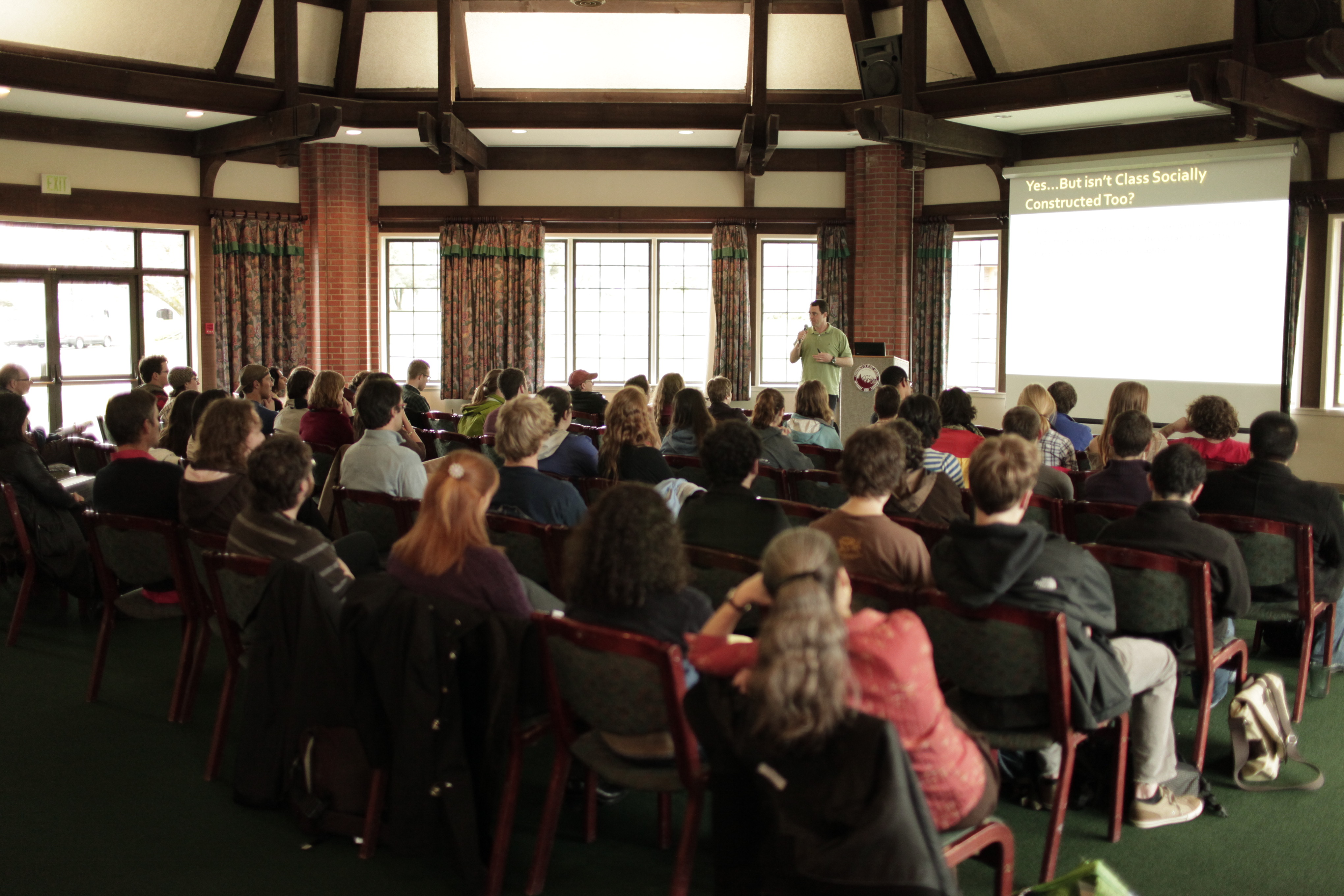
The era of the idea of a white, male hegemony is over. No longer are white and male the principle determinants of an elite, moneyed experience. Indeed, it is safe to say that they never were such. Rather, class, not race, shapes most who we are. When determining social diversity, then, it is important to abandon the old paradigm in which white and male defined the ‘norm’ against which the other was interpreted.
Comparative Sociology Professor Richard Anderson-Connelly, in his March 30 talk entitled “A Left-Wing Critique of the Diversity Program,” made a few important points that are worth repeating. First, Anderson-Connelly pointed out that race is a social construct. As a social construct, and especially because of the linguistic component in its construction, race is defined relationally: One is white in that one is not black, ochre, olive, or coffee.
Second, Anderson-Connelly pointed out that class has legal foundations, whereas race does not. Anderson-Connelly defines class in terms of control of the means of production. The American legal system protects the ownership of capital. The spectrum of class, from rich to poor, is the degree of this ownership. So, the “haves” of our society also have laws to protect what they have.
The hegemonic ideology of our society is shaped by the upper class. Typically, the upper class has been peopled by white males. But those who tout a notion in which white, male concerns have directed American history often ignore the important issue of class. The most defining characteristic of the powerful, white men of history is not their whiteness or maleness, but their membership in the upper class. Indeed, it would be shoddy historical analysis to equate the hegemonic ideology of the upper class to white males in general.
To be sure, the overlap between the hegemonic, upper class ideology and the white male has been too broad to be coincidental. But the initial concern of the ruling class is not the primacy of white men, but rather the security of their control of the means of production. The privileging of white maleness is secondary, a means with which to define and legitimize the ruling type. An additional characteristic, however, is also added: he in charge must always be of the upper class.
We must understand that white and male are not bound inextricably to the ruling class ideology. To remain fixed to this old paradigm is to limit our analysis of the current situation. President Barack Obama is an excellent example of why equating white and male with hegemony is not accurate. Mr. Obama’s ascent from the hoi polloi to the U.S. Senate and presidency is an ascent of class. Mr. Obama is wealthy, well-educated and thoroughly ingrained in the upper class. While it is tempting to use the color of his skin to group him with the average African-American, the contents of his mind and bank account make him an upper class individual.
Today, as the gap between upper and lower class grows ever wider, it is important to understand the nature of the ruling class. Especially when determining diversity from the norm, it is important to abandon the outdated notion that what is not white or male is diverse. Anderson-Connelly is correct, I believe, in saying that “the diversity of skin-color…cannot be assumed to bring a diversity of ideas.”
Yet, it almost seems that those who wish to promote people of color as inherently diverse need to keep the outdated model of white male primacy alive. White male primacy remains a fictional, monolithic specter against which to define diversity.
White men, however, are far from uniform. There is no such thing as a white male culture. Rather, within the spectrum of white men are many levels of class. These classes extend beyond the strata of white men to include people of other skin color and gender.
Class, therefore, is far more accurate in determining diversity. Since class shapes experience most, a diversity of individuals at the University of Puget Sound could best be marked as a diversity of individuals from different classes. While the inequality between “haves” and “have-nots” should not be celebrated, it is important to be aware of class precisely because today class is mutable. By acquiring capital of one sort or another, one can ascend in the class rank.
To shift from race to class when interpreting diversity also undermines the idea that all white males are essentially normal. This is an inaccurate worldview. It waves away the normality of some non-whites by imposing upon them the role of the Other, the different, the diverse. One must abandon the old paradigm of race-based diversity to truly appreciate the actual diversity of experience at the University of Puget Sound.
